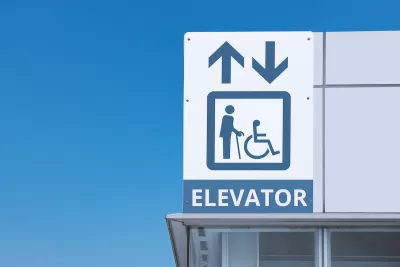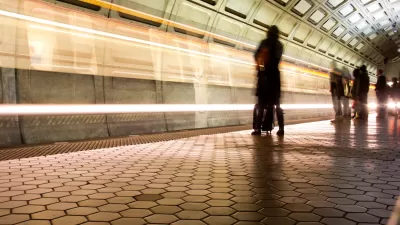Even when accessibility is taken into account, transit stations and pedestrian infrastructure often still fail to make appropriate accommodations.

Despite federal and state laws dictating that public spaces must be accessible to people with disabilities and mobility challenges, many cities in the United States and Canada remain largely inaccessible, writes Ron Buliung in a piece for The Conversation.
According to Buliung, “Access to safe and reliable public transit is one such problem. For example, many of the issues plaguing paratransit (ideally on-demand, door-to-door service for disabled persons) today — unacceptably long wait times, having to plan and schedule days in advance, service costs, convoluted trip regulations, failing to pick people up — are often as old as the services themselves.”
Public transit stations, meanwhile, often lack functional elevators and other amenities. When they do have them, they often face what Buliung calls the ‘last millimetre problem:’ “a wide gap or vertical misalignment between platforms and transit vehicles making it impossible or hazardous for some disabled persons, like my daughter, to get on or off the system.”
Bike infrastructure, too, can exclude the needs of people with disabilities by failing to provide signals for blind pedestrians, for example.
For Buliung, part of the solution is for cities to more carefully listen to the needs of people with disabilities and include them in decision-making in transportation and infrastructure projects from the beginning. “Real accountability, rather than performative empty consultation, should be the order of the day.”
FULL STORY: Despite legislative progress, accessible cities remain elusive

Alabama: Trump Terminates Settlements for Black Communities Harmed By Raw Sewage
Trump deemed the landmark civil rights agreement “illegal DEI and environmental justice policy.”

Planetizen Federal Action Tracker
A weekly monitor of how Trump’s orders and actions are impacting planners and planning in America.

Why Should We Subsidize Public Transportation?
Many public transit agencies face financial stress due to rising costs, declining fare revenue, and declining subsidies. Transit advocates must provide a strong business case for increasing public transit funding.

Understanding Road Diets
An explainer from Momentum highlights the advantages of reducing vehicle lanes in favor of more bike, transit, and pedestrian infrastructure.

New California Law Regulates Warehouse Pollution
A new law tightens building and emissions regulations for large distribution warehouses to mitigate air pollution and traffic in surrounding communities.

Phoenix Announces Opening Date for Light Rail Extension
The South Central extension will connect South Phoenix to downtown and other major hubs starting on June 7.
Urban Design for Planners 1: Software Tools
This six-course series explores essential urban design concepts using open source software and equips planners with the tools they need to participate fully in the urban design process.
Planning for Universal Design
Learn the tools for implementing Universal Design in planning regulations.
Caltrans
Smith Gee Studio
Institute for Housing and Urban Development Studies (IHS)
City of Grandview
Harvard GSD Executive Education
Toledo-Lucas County Plan Commissions
Salt Lake City
NYU Wagner Graduate School of Public Service





























